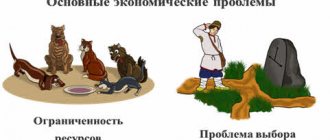so UNT / Social studies / Lesson plans for social studies 7th grade for the Bogolyubov textbook
Lesson “Golden hands of a worker” (§ 13)
04.11.2013 12866 0
The content of this topic is intended to be a link between a number of issues studied in the 6th grade (human labor, simple and complex labor, the work of an artisan and the work of a craftsman), and a serious consideration of economic issues related to the labor of a producer in the 9th grade.
The content of the topic has not only an educational, but also a deep educational meaning: those who are distinguished by special skills and the results of their work deserve the deep respect of others.
The topic directly concerns students. Everyone has to work, and therefore the question of what a person should be like as a worker should not leave seventh-graders indifferent.
Plan for learning new material
1. What makes up an employee’s skill.
2. What kind of work is there? Why is advanced training so necessary these days?
3. What is labor remuneration. What determines its size?
4. What is the quantity and quality of labor. How are they related to each other?
Emotional inclusion in the topic of the lesson can be achieved by activating the social experience of seventh-graders. In particular, you can ask them to answer the second question of the “Remember” section, using specific examples from the life around them (for example, compare how different people representing the same profession work: salespeople in a store; teachers in a kindergarten, nannies at school, controllers on buses, trolleybuses, trams, nurses and doctors in a clinic or hospital, etc.). What do their work have in common and what makes them different? What qualities command respect? What qualities make you reluctant to date in the future?
To summarize the answers, you can remind students of the saying: “It’s not the place that makes the person, but the person that makes the place.” In any profession, in any position, in any business, if you wish, you can become a master.
It makes sense to talk about the employee’s skill. The necessary material is given in the introduction to the paragraph. Questions will help to understand it: who are they talking about “master of golden hands”? Which people you know can be called that? Explain why you think so.
The content of the heading “Once upon a time there lived a man” can be presented in the form of an emotional story by a teacher or student, prepared in advance. Expedient-
but assign this story to one of the students who combine classes in general education and music schools. Such an assignment will encourage students to engage in additional activities based on interests and will become a mechanism for transferring knowledge acquired in the additional education system to the lesson. The story about Antonio Stradivari leads students to one of the main questions of the lesson, set out in the section “What makes up the skill of a worker.”
The content of the first part of the section on the skill of a worker and its components can be brought to the understanding of students in two ways. The first of them is work on questions that are a direct continuation of the story about Antonio Stradivari. What did Antonio learn from his teacher? At what age did he make his first violin? Did he immediately manage to become a master? How many years did the great master perfect his skills? How did Stradivari's work differ from the work of other violin makers?
The last question makes it possible to emphasize why the master wrote his name on each instrument he made. This is an ethical aspect - professional honor, pride, which a true master always values.
The second option for mastering the content of the section is for students to visualize their future work and analyze what they need to master in order to be a master of their craft. In both cases, the conclusion of the discussion should be the following series: professional knowledge, practical skills, certain abilities, love for one’s work. These are the components of worker skill. During the explanation, it is useful to rely on the students’ existing (obtained in 6th grade) ideas about knowledge, skills and abilities.
Working on the next part of the section, the teacher, relying on the text of the textbook, can introduce students to the concepts of highly skilled (complex) and low-skilled (simple) labor1. In order to intensify the activity of students, you can ask a preliminary explanation question: why does a programmer need to study longer than a refrigeration unit maintenance technician, and a doctor longer than a programmer? The answer to the question must be given by listening to the teacher’s explanation. Practice shows that the question does not cause difficulties. Students are able to independently identify special knowledge, skills and abilities as the main characteristics of highly qualified labor and conclude: the more complex the work, the greater the amount of special knowledge the worker needs and the longer it takes to learn the secrets of this work.
1 It seems inappropriate, following some authors, to use the term “unskilled labor”, since it is important to consolidate in the minds of students the idea that any work requires certain knowledge and skills.
It is appropriate to dwell on the fact that any manual labor cannot be mechanically considered simple labor. For example, complex microcircuits are assembled manually. Can this work be called simple?
The text of the section of the textbook under consideration contains the following task: at home, with the help of parents, select examples of manual labor that require high qualifications, as well as specialties in which mental and physical labor are interconnected. The task has both educational and educational meaning. The latter concerns the importance of joint search work between students and their parents.
For effective learning, it is very important that parents from time to time become participants in the educational process and, together with their children, experience the joy of learning. This creative task does not involve ready-made parental answers and therefore can promote joint mental exploration and the joy of discovery.
The next question of the plan: why is it so necessary to improve the qualifications of workers these days? The answer to this lies in the final fragment of the text of the paragraph on modern production. It makes sense to introduce it to students textually. For this purpose, it is useful to ask to read the paragraph beginning with the words “Rapid progress...” and highlight the features of modern production in the text. The result of independent work should be a list of the following features:
— the number of new industries and specialties is growing;
— less and less space remains for simple labor;
— the demand for highly qualified labor is growing;
— demands on employees are increasing all the time;
- It is necessary to improve your skills in order to meet modern requirements.
If there is time, it is useful for the teacher to tell in what forms advanced training can be carried out, and also to highlight the fact that the employee himself is primarily interested in advanced training, since this makes his work more meaningful.
The transition to studying the “Labor and Salary” section can be to check the completion of the task, which is recommended to be given the day before: why do people work? According to the task, it was suggested to ask parents at home why they work and write down three reasons in each case. During the lesson, it is appropriate to conduct a quick survey on the parents’ answers, writing down each answer with new content on the board. Although the issue of monetary compensation for work will be discussed in detail later in the lesson, it is important that students do not get the idea that people work solely for money. Therefore, it is advisable to spend a few minutes identifying the motives for work, focusing on social status and moral motives.
To present material about an employee’s salary (labor remuneration), the teacher can provide some additional information.
Wages are monetary remuneration that an employee receives for his work, for work performed over a certain period of time. Salary depends on the quantity and quality of labor expended by the employee1. The salary amount can be established in an agreement, a contract that is concluded between the employee and the organization that hires him. The minimum level of wages - the amount of wages less than which cannot be paid - is established by law.
1 The issue of quantity and quality of labor will be discussed later in the lesson.
Next, it is advisable to understand how the amount of labor remuneration is determined. The text of the textbook gives six reasons for determining the amount of salary. Students can read about them and name them based on the textbook text. Six students can take turns presenting each of the reasons described.
The question of the quantity and quality of work can be presented by the teacher based on the text of the textbook. When presenting it, it is advisable to rely on the knowledge students already have about labor productivity. To consolidate the material about the quantity and quality of labor, it is advisable to ask how the quantity and quality of labor are related to each other. After hearing the answers and summing up the discussion, it is important for the teacher to emphasize that this connection can be traced both in the labor process (high-quality labor is more productive, high qualifications lead to increased labor productivity, and ensure a reduction in production costs) and in the results of labor (among highly qualified specialists, masters of their craft, distinguished by high quality of work, there are no defectors).
The material in the “Journey to the Past” section can be assigned at home for independent reading. In terms of content, it can be linked to creative task 5 of the “In the classroom and at home” section and asked students to complete it in the same way as the content of the “Journey to the Past” section is presented.
You can do the same with the text of the “Learning the secrets of professional success” section, accompanying its independent study with tasks 7 and 8 of the “In the classroom and at home” section.
Homework may also include preparing answers to questions in the “Test yourself” section and tasks 1–4 of the “In the classroom and at home” section.
It is advisable to start the second lesson by checking the completion of creative tasks 5, 7, 8 of the “In the classroom and at home” section. In the second part of the lesson, you can organize work to check the completion of tasks under the “Test yourself” rubric and tasks 1-4 under the “In the classroom and at home” rubric. A traditional survey can be combined with students’ work on the board (in particular, on task 2 of the “Test Yourself” rubric) and on cards that reproduce the text of the tasks in the “In the classroom and at home” rubric.
Task 2 of the “In the classroom and at home” section may cause difficulty in completing.
The very phenomenon of the opening of numerous accounting courses in Russia in the mid-90s. XX century is associated with the emergence of a large number of private and cooperative enterprises, as well as with the activation of public associations and organizations in need of accounting specialists. But students may not know this. The key to completing the task is the state of readiness of people to change their profession, move to a new job, most likely caused by dissatisfaction with working conditions and salary levels, loss of interest in their previous work, and confidence in the great opportunities offered by the new profession.
Additional creative assignments may be offered to high-performing students.
In the early 90s. In the US, an employee who constantly uses a computer received on average 15% more than his colleague who does not own a computer. The average annual income of men with a college degree in 1995 was about 70% higher than that of those who entered the workforce immediately after high school. At the end of the 70s. this difference was only 42%.
What conclusions can be drawn from these data? Find phrases in the textbook that contain the ideas on which these conclusions are based.
Many enterprises spend a significant portion of their funds on improving the skills of their employees and try to hire the most promising graduates of secondary and higher educational institutions.
Why do they do this? Give a few reasons.





